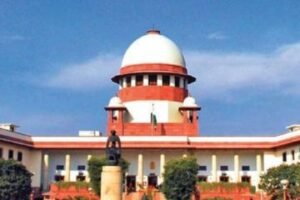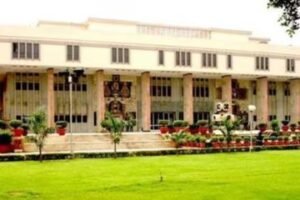Supreme Court Questions Restrictive Scope of ‘No-Fault’ Liability under Section 163A Motor Vehicles Act: Refers Issue to Larger Bench
Table of Contents
- Introduction
- Section 163A: The “No-Fault” Scheme Explained
- The Legal Controversy: Who Can Claim Under Section 163A?
- The “Third Party Only” Interpretation
- Emerging Doubts and Conflicting Rulings
- The Supreme Court’s Current Doubt and Referral
- What Issues Will the Larger Bench Decide?
- Social and Legal Implications
- 1. For Accident Victims & Families
- 2. For Insurers
- 3. Clarity and Uniformity
- 4. Judicial Efficiency
- Legal Precedents and Contrasting Interpretations
- What Happens Next?
- Frequently Asked Questions (FAQs)
- Conclusion
Introduction
The Supreme Court of India has set the stage for a landmark reinterpretation of motor accident compensation law. In an order with potentially far-reaching implications, the Court has doubted the long-held view that ‘no-fault’ liability under Section 163A of the Motor Vehicles Act, 1988, is restricted only to third-party claims. Instead, the bench observed that the provision’s language and welfare objective may extend compensation rights to a broader class—including owners, drivers, and their legal heirs involved in single-vehicle or self-caused accidents. As a result, the Court has referred this issue to a larger bench, paving the way for authoritative clarity and possible transformation of victim compensation in India.
Section 163A: The “No-Fault” Scheme Explained
Section 163A was introduced to provide swift, standardized compensation for victims of motor vehicle accidents without requiring them to prove fault or negligence. This so-called “no-fault” regime was a major departure from Section 166, which follows the traditional, litigation-heavy path of tort liability by requiring proof of another’s fault.
The main features of Section 163A include:
- Structured Formula: Compensation is payable according to a fixed schedule based on age and income.
- No-Fault Principle: Claimants receive compensation without establishing who was at fault in the accident.
- Welfare Objective: The provision was intended to deliver prompt, fair monetary relief to accident victims and their families, sidestepping the delays and uncertainty of regular civil litigation.
The Legal Controversy: Who Can Claim Under Section 163A?
The “Third Party Only” Interpretation
For nearly two decades, Indian courts—relying largely on the Supreme Court’s 2004 ruling in Deepal Girishbhai Soni v. United India Insurance Co. Ltd.—maintained that Section 163A was only meant for third-party victims, i.e., not the owner or driver of the offending vehicle. Under this view, the relief is:
- Available only to individuals other than the vehicle owner or person “at fault.”
- Unavailable to owners/drivers themselves (or their heirs) who suffer injury or death, especially in single-vehicle or self-accidents—leaving families of self-employed or low-income drivers unprotected.
Emerging Doubts and Conflicting Rulings
Calls for reform have grown over time. Critics argued that this restricted interpretation defeated the social welfare spirit of Section 163A, particularly harming sole proprietors, taxi drivers, and low-income earners who face fatal or disabling accidents while using their own vehicles.
Some High Courts started awarding compensation to owners or their legal heirs under Section 163A, especially where comprehensive insurance was in place or no evidence existed of willful negligence.
The Supreme Court’s Current Doubt and Referral
The recent Supreme Court bench, led by Justices Sudhanshu Dhulia and K. Vinod Chandran, has questioned the long-standing, narrow reading. The bench highlighted:
- Non-obstante Clause: Section 163A begins with a “notwithstanding anything contained in this Act or in any other law…” clause, indicating its overriding effect and undermining arguments about its location in the “third party insurance” chapter.
- Welfare Intent: The primary purpose is to ensure quick compensation for accident victims, not to protect insurance companies’ risk pools at the expense of vulnerable families.
- Language Ambiguity: The Court found the existing “third party only” limitation unwarranted in the bare reading of the statute, raising questions about whether owners and their heirs should rightfully come under Section 163A’s umbrella.
As a result, the Supreme Court has referred the question to a larger bench for a final and authoritative pronouncement.
What Issues Will the Larger Bench Decide?
The larger bench is set to answer several fundamental questions:
- Scope of Claimants: Does Section 163A cover only third-party accident victims, or can owners/drivers or their legal heirs also claim compensation?
- Interplay with Insurance Policies: Should premium structures and coverage be adjusted if broader claims are allowed?
- Interpretative Method: Should “chapter heading” and placement determine a section’s beneficiaries, or does legislative intent and language prevail?
Social and Legal Implications
1. For Accident Victims & Families
A broader reading could finally enable legal heirs of drivers/owners—even in single-vehicle accidents—to receive compensation under Section 163A. This could be lifesaving for self-employed drivers, delivery agents, and others whose livelihoods are centered around their own vehicles.
2. For Insurers
An expanded scope would require insurers to re-calculate premiums and develop clearer policy language. Insurance providers may bear increased liability, leading to calls for well-defined exclusions and coverage clauses.
3. Clarity and Uniformity
If the larger bench provides a definitive answer, it will resolve years of inconsistent approaches in High Courts and Motor Accident Claims Tribunals, creating greater legal certainty and fairness for all parties.
4. Judicial Efficiency
More precise guidelines will reduce litigation and help tribunals quickly and fairly decide accident claims, resulting in faster, more predictable compensation for victims or their families.
Legal Precedents and Contrasting Interpretations
- Deepal Girishbhai Soni (2004): Limited Section 163A claims to third-party cases only, interpreting the section through the lens of its chapter heading (“Insurance of Motor Vehicles Against Third Party Risks”).
- Conflicting High Court Judgments: Some High Courts (Punjab & Haryana, Madras, Kerala) have begun awarding Section 163A compensation to owners, citing the plain words and social justice imperative of the statute.
The current referral invites the Supreme Court to finally settle this conflict.
What Happens Next?
Until the larger bench settles the issue, there remains significant uncertainty for accident victims, insurance companies, and lower courts. Claims under Section 163A by owners, drivers, or their heirs may continue to be decided inconsistently across the country.
Lawyers and parties are advised to keep a close watch on the larger bench hearing, prepare robust arguments, and ensure insurance contracts are reviewed and, where possible, clarified in light of possible legal developments.
Frequently Asked Questions (FAQs)
Q: What is “no-fault” liability under Section 163A MV Act?
A: It enables accident victims or their families to claim fixed compensation without needing to prove fault or negligence.
Q: Who currently claims under Section 163A?
A: Mostly third-party victims, but a legal grey area exists for owners/drivers—especially in single-vehicle accidents or self-employment contexts.
Q: What did the Supreme Court say recently?
A: The Court doubted the “third party only” interpretation and referred the issue to a larger bench for resolution.
Q: Will insurance premiums change if owners are covered?
A: Possibly, as insurers may face more claims and need to recalibrate risk and coverage.
Conclusion
The Supreme Court’s decision to revisit the scope of Section 163A MV Act heralds a crucial turning point for India’s accident compensation regime. By seeking an authoritative ruling from a larger bench, the Court has signaled potential for a more inclusive, socially responsive compensation system that could protect a broader array of accident victims—not limited only to “third parties.” Legal clarity on this issue is urgently awaited and will impact millions of vehicle owners, accident survivors, and bereaved families nationwide.




